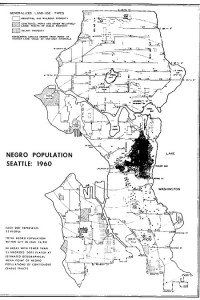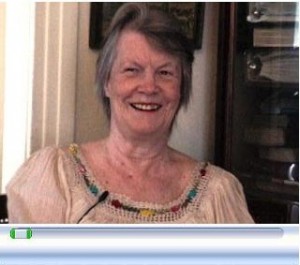We continue our Stand Against Racism blog series as we lead up to the April 27th Stand Against Racism event day.
Written by Erin Murphy, Director of Education and Advocacy Network at the YWCA Seattle I King I Snohomish.
I recently experienced some exciting life changes. My boyfriend proposed last week and in the midst of all the other exciting thoughts about the future is housing. Where are we going to live? I’m in a sweet but tiny one-bedroom that won’t fit anywhere close to all our furniture let alone our two cats.
So I found myself spending a lot of time on Craiglist. Every time I move, I always consider what neighborhood I would prefer to live in and the characteristics that come with the neighborhood. Diversity is important to me but it seems odd that diversity is a characteristic that can be applied really to only a few neighborhoods, and those neighborhoods have changed over time. Why is this? I’ve come across a few resources that give great insight into the history of Seattle housing. We live with a legacy of structural racism that has shaped our neighborhoods. That racism may not be as overt today, but there is even more power in its current subtleties as it continues to influence our housing choices.
Curious, I put my Google skills to work, and found the following links and resources that 1) shed light on the Seattle history of housing and race and 2) make me feel less alone in my own struggle as I worry that my housing choice will reinforce, however unintentional, neighborhood segregation and disparity.
Segregated Seattle, part of the University of Washington Civil Rights and Labor History Project.
I stumbled across this website and was blown away by the depth and breadth of information. Did you know Seattle had racial restrictive covenants? It did and this site has the most extensive database of racially restrictive neighborhood covenants and deed clauses available for any city in the country. Here’s an EXAMPLE of a racial restrictive covenant for the Capitol Hill neighborhood in the 1920s.
Such covenants created a corralling of certain populations so that in the 1960’s the population density of the African-American population looked like this:

I couldn’t help be curious about my own neighborhood. I’m currently living in Ballard and found that the neighborhood had the following restriction:
“No part of said property hereby conveyed shall ever be used or occupied by any Hebrew or by any person of the Ethiopian, Malay, or any Asiatic race.”
They got pretty specific there.
You can search through the Racial Restrictive Covenant database in addition to Seattle Segregation Maps for multiple ethnic groups. There are also a number of excellent research reports written by students including one by Catherine Silva titled: Racial Restrictive Covenants: Enforcing Neighborhood Segregation in Seattle. In it, she shares:
“There is a long history behind these race-based housing patterns. From the 1920s to the 1960s, racial restrictive covenants prevented non-Whites from moving out of the “ghetto” and into neighborhoods where today they are still underrepresented. The history of racial restrictive covenants and racial segregation, while generally forgotten, is an immensely important aspect of Seattle’s past. It has left its mark on all Seattle neighborhoods and has shaped the demographics of Seattle’s residential neighborhoods.”
The UW Project also offers a great collection of oral histories, shared by numerous civil rights activists. The story of Marion West jumped out at me and her opposition to housing segregation.

Marion married an African-American veteran.
“In 1952, the couple purchased an old fraternity building in the University District, intending to provide housing to black students, who until then had trouble renting in the area. This attempt to break north Seattle’s segregation earned them the enmity of neighbors. For the next seven years they endured taunts and harassment. One night in 1958, the Wests found a cross burning in their front yard.”
Unfortunately I’m unable to embed the video directly in the blog post, but I encourage you to visit the oral histories page where you will find Marion’s video and many more.
Gentrification, Integration, or Displacement: The Seattle Story.
Henry W. McGee, Jr. is a Seattle University School of Law Professor. In this article he discusses the shift in the Central District, from predominantly working class African-Americans to the current population of higher-income, white, Asian-American, and African-American professionals.
“Anecdotally, I have lived literally on the northeast boundary line of the Central District since 1994. I can affirm that the passengers on the bus I’ve taken to work each day over the past decade have become whiter and whiter as it traveled through the community. Indeed during rush hour when office workers and professionals take the 20 minute bus ride downtown or back to their homes, I am often the only African American on board.
Although working class and moderately affluent African Americans have abandoned the Central District for housing bargains elsewhere, there is little doubt that continued racial discrimination has also played a role in their displacement. In a 2003 study of discrimination in home mortgage lending, the Association of Community Organizations for Reform Now (ACORN) discovered that Seattle African American loan applicants were 2.56 times more likely to be denied a conventional mortgage loan than white applicants in 2002.”
Structural Racism and a Mother’s Choice
When I saw this video, I had a “That’s It!” moment! You know, that moment when you find something or someone that articulates exactly what has been at the forefront of your brain but you can’t seem to find the right words?
Now, I’m not a mother yet. I probably won’t be for a few more years. Yet I can’t help but still think on this very issue. I strongly feel that my experiences living in multiple neighborhoods of varying economic and ethnic backgrounds shaped who I became in a positive way. Yet I don’t necessarily wish all the moving around or some of the more unsafe housing situations on my future kids or anyone else. So where is the balance?
The question posed in the blog post that shared the video is: Have you found that your desire to live in an affordable, ethnically diverse area moved you to make a housing decision which unintentionally supports/perpetuates segregated communities?
Personally, I have to say yes. After all the Craiglist hunting, we will be moving in June into the Phinney/Greenlake neighborhood. Not exactly diverse. But it’s my dream kitchen, within easy distance to work, 3 blocks from a gorgeous lake, and for the first time in my life, I can afford it. Is any of this wrong? Maybe not, but I still can’t shake a feeling of uneasiness. I tell myself it is ok, because we will probably only rent the house for 2-3 years and then will need to face the housing decision all over again and maybe then, I can find that better balance. Yet I feel that it will still be a struggle.
Have you had such a struggle? How do you ultimately decide on where to live?